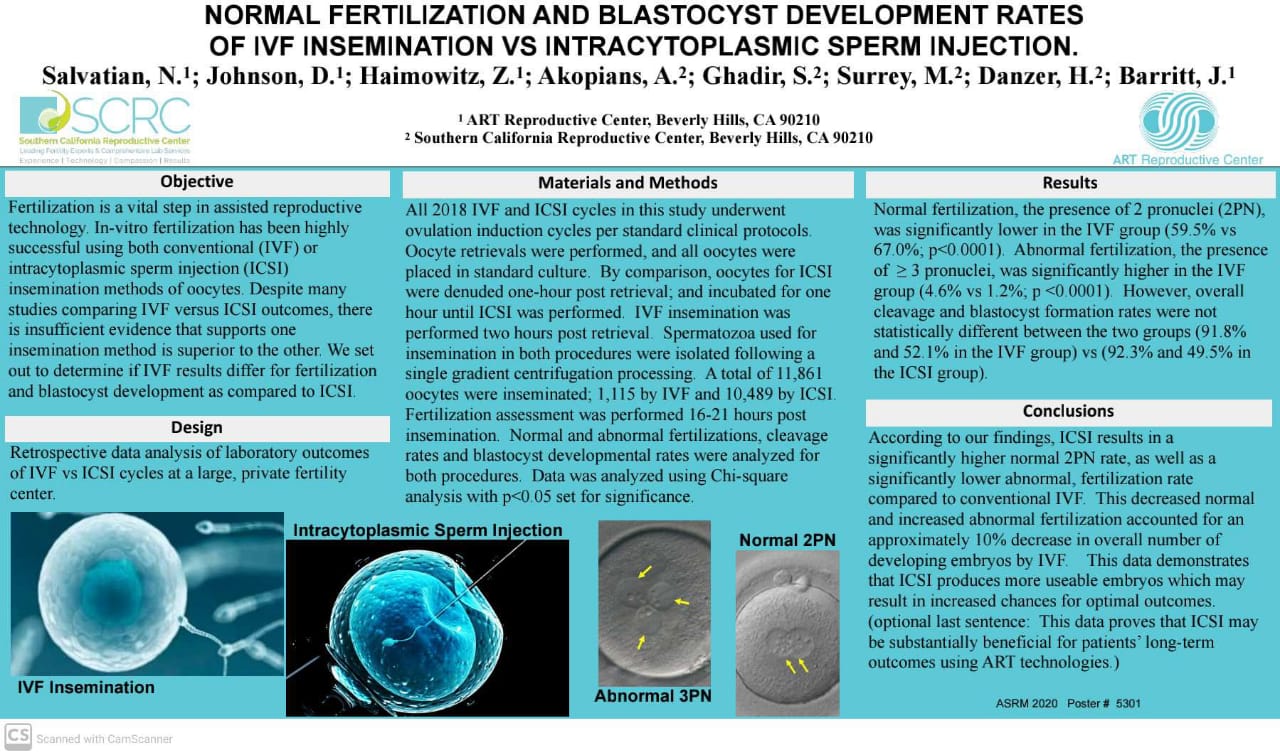Track: ART – LAB, Assisted Reproductive Technology
Poster : ART Lab: Technology
Seyedeh Nahaleh Salvatian
Embryologist
ART Reproductive Center
Beverly Hills, California
Objective: In-vitro fertilization has been highly successful using both conventional insemination (IVF) and intracytoplasmic sperm injection (ICSI) methods for fertilization. Despite many studies comparing IVF versus ICSI outcomes, there is insufficient evidence that supports one method is superior to the other. We set out to determine if results differ for fertilization and blastocyst development when comparing IVF vs ICSI. DESIGN: Retrospective data analysis of laboratory outcomes of IVF vs ICSI cycles at a large, private fertility center. MATERIALS AND
Methods: All 2018 IVF and ICSI cycles underwent ovulation induction per standard clinical protocols. Oocyte retrievals were performed, and oocytes for ICSI were denuded one-hour post retrieval; and incubated for one additional hour until ICSI was performed. By comparison, IVF of oocytes was performed two hours post retrieval. Spermatozoa used in both procedures were isolated following a single gradient centrifugation processing. A total of 11,861 oocytes were exposed to sperm; with 1,115 by IVF and 10,489 by ICSI. Normal and abnormal fertilizations and blastocyst developmental rates were analyzed for both procedures. Data was analyzed using Chi-square analysis with p<0.05 set for significance.
Results: Normal fertilization, the presence of 2 pronuclei (2PN), was significantly lower in the IVF group (59.5% vs 67.0%; p<0.0001). Abnormal fertilization, the presence of ≥ 3 pronuclei, was significantly higher in the IVF group (4.6% vs 1.2%; p <0.0001). However, overall blastocyst formation rates were not statistically different between the two groups (52.1% in the IVF group and 49.5% in the ICSI group).
Conclusions: According to our findings, ICSI results in a significantly higher normal fertilization rate, as well as a significantly lower abnormal fertilization rate compared to conventional IVF. These differences alone account for an approximately 10% decrease in the overall number of developing embryos when using IVF. This data demonstrates that ICSI produces more useable embryos, which may be substantially beneficial for patient’s long-term outcomes using ART technologies.
ASMR official sponsorship in the publications of the virtual ASMR conference October 17-21 October 2020

